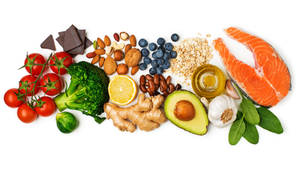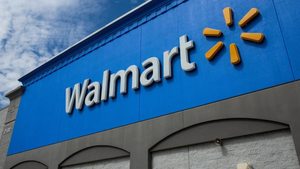Chicken Run
The economy has shifted drastically during the past two years, and many consumers are feeling pinched. But shopping behavior in meat departments has been somewhat unpredictable. The chicken category, for example, has a long-standing reputation for value, and with rock-bottom wholesale prices since the start of the year, retailers have been able to offer deals that have shoppers flocking to the meat
August 24, 2009
AMY SUNG
The economy has shifted drastically during the past two years, and many consumers are feeling pinched. But shopping behavior in meat departments has been somewhat unpredictable. The chicken category, for example, has a long-standing reputation for value, and with rock-bottom wholesale prices since the start of the year, retailers have been able to offer deals that have shoppers flocking to the meat case. But while sales of jumbo packs and combo packs are on the rise, many shoppers are responding to economic pressures by shopping more frequently and purchasing smaller rather than larger baskets of products, while hunting even more aggressively for bargains.
Several factors have led to the current situation. Most importantly, suppliers have slashed production of chicken this year, but demand from the restaurant industry has remained so weak that wholesale prices have continued to decline. As a result, shoppers are still seeing plenty of specials at retail.
“[U.S.] production of chicken is down 5% this year, the first time we've adjusted production in more than three decades, and for us, it's a very big adjustment,” said Bill Roenigk, vice president and economist for the National Chicken Council, Washington.
“But the reason consumers in the supermarket have not seen any lack of supply of chicken, nor have they seen any higher prices, is because the chicken that normally would be going to foodservice or restaurants, because of the economy is not going there. So, our sales of chicken to foodservice or restaurants is down about 5 or 6% this year, and that extra chicken is now going to supermarkets.”
By contrast, supermarkets are actually enjoying an increase in sales of chicken. Average volume sales of chicken sold per store per week increased 3.7%, while dollar sales per store per week increased 3.9% vs. a year ago, according to “The New Realities of Consumer Shopping Behavior,” a July 2009 Fresh Facts report by the Perishables Group, West Dundee, Ill.
And retailers have been able to hold prices relatively steady for most of the year so far. The average retail price for chicken in 2009 through May 1 was $2.03, up 0.2% over a year ago, according to the Perishables Group report. The average retail price for the total fresh meat category was $2.74, a 0.7% increase vs. a year ago.
And according to the U.S. Department of Agriculture's report on Weekly Retail Chicken Feature Activity for Aug. 14-20, almost 95% of 18,600 outlets featured chicken, setting a record level for the activity index on poultry items in retail outlets across the country.
Price incentives remain strong to pick up extra chicken, with “no price” specials — such as buy-one, get-one-free offers — in the East and Southeast ranging as high as 30%-40%, the USDA report stated.
TRADING DOWN
With the supply of chicken up, wholesales prices down and consumers being more price-conscious than ever, retail prices are facing pressure. And the way retailers market and feature chicken in the meat case has grown in importance.
At United Supermarkets, Lubbock, Texas, the chicken category is up about 10% over last year, Scott Nettles, business director of meat and seafood, told SN.
“I think there is a twofold reason for this: One, more of our current guests are trading down to chicken as a cheaper source of protein, and secondly, new guests are coming in to avoid the higher price of eating out, and chicken gets a double benefit of being cheap and having a new customer,” Nettles said.
Similarly, Maria Brous, spokeswoman for Publix Super Markets, Lakeland, Fla., noted that chicken is always a “top performer,” but that the economy may be driving additional traffic within the category.
“In a tough economic climate, there are customers who are trading down and purchasing different items. It will vary by customer and by store location.”
Publix and United said they regularly feature chicken throughout the year, and Nettles told SN that while he has not necessarily increased features, he has been able to hit some hotter price points than before, which is helping drive demand.
Retailers have generally always featured a number of chicken items on a regular basis, Roenigk agreed.
“Normally, in better economic times we would see more boneless, skinless breast being featured, although in the recent weeks in the summer here, I have seen more of that. But this year, we have seen more of the leg meat: leg quarters, drumsticks, thighs and what they call combo packs,” Roenigk said.
“Normally, the trend has been over the years for packages to be all one part, all legs, all wings or all boneless, skinless breast, but we're seeing a bit of a resurgence of what we call the combination packs, whether it be two legs, two breasts and two wings, or different combinations. It's a way for the retailers to offer variety and value to the consumers as well as helping the chicken supplier balance what's coming out of the processing plant.”
Publix Super Markets offers a combo pack of bone-in chicken parts, which Brous said Publix sees as another option for its customers. Publix also offers different-sized packages of each cut.
United Supermarkets sees the importance of value and offers jumbo packs of chicken.
“We have been able to lower our everyday retails on key items like jumbo packs of drums and thighs, leg quarters and boneless, skinless breasts,” Nettles said.
“Customer acceptance of the jumbo packs is very high.”
Within the chicken category, combo packs demonstrated the fastest growth, with dollars per store per week up 25.3% vs. a year ago, according to the July Perishables Group report. And, in a survey component of the report, when asked to cite new ways that they were trying to economize this year compared with last year, 35% of respondents said they were purchasing economy packs of meat more often.
But while some retailers are seeing success with jumbo or combo packs, some consumers are actually shopping more frequently than before, and buying less per trip because they may not have the dollars to spend all at once.
“There are two sub-segments of consumers. There are the shoppers who are really forced by the scarce dollars they have — be it because they don't have a job, they're getting unemployment or they have a job that's not paying as well as it used to — [to] really have to watch their dollars,” Roenigk said.
“The other one is the food shopper who has the dollars today but aren't sure if they'll have the dollars tomorrow, so they're being very cautious about spending the dollars they have. If they see a value and see a deal where [they have the option to] buy a large pack at a very good value, they do have the dollars to exercise that option, so they could save money in the long run. The first sub-segment of the consumers really doesn't have the extra dollars to go and buy that big pack.
“You would think that with the dollars being scarce and with the price of gas, you would see people go to the store, make a planned visit, load up and you wouldn't see them for another week, but apparently, we're seeing more of this hand-to-mouth, ‘Let's look and see what bargains are in the store today that we might have missed the last time.’”
Consumers are also putting value and price over nutrition and health, more so than before.
“Where people wouldn't look at a leg quarter because they thought it had a lot of fat on it, we're not seeing as much resistance to that as before, where people said, ‘I only buy boneless, skinless breast meat because that's what I like, that's what's healthiest for me.’ We're seeing more people willing to say, ‘OK, well, leg quarters aren't something we normally serve, but given the dollars I have available and the value I see in the meat case, it's a very good option for what I'm trying to get through here,’” Roenigk explained.
In the Perishables Group's “Pricing Consumer Research Project 2009,” 82% of those surveyed said they have taken note of beef's higher prices and 43% are now purchasing chicken instead.
And 51% of consumers said they have increased their purchases of meat that is on sale, while 41% say they are buying more meat that they have seen advertised in weekly ads or circulars, according to the Perishables Group report. More than one-half, 53%, of the households surveyed in the NCC's 2008 Consumer Research report were using chicken to help make ends meet for the household food budget.
NEW SPOTLIGHTS
While many customers purchase what is on sale, or what will offer them the most value on a cost-per-serving basis, some still want the convenience of value-added, which can pose a challenge for some retailers.
“The supermarket people are between a rock and a hard place when it comes to new products,” Roenigk said.
“On one hand, as a general statement, there are better margins on the value-added, so retailers do like to feature those to get that margin. On the other hand, if you're a food shopper and your dollar is very tight, you're really looking at the value-added products and saying, ‘Is that something that really is of value to me, or can I take a boneless, skinless breast and do something with that and not pay for the extra marination, spice or flavoring that the processor may have added to that breast?”
At United, customers do see value in having pre-marinated chicken available, Nettles said.
“We do try to add value to all parts, wings, breasts, drums and thighs, through a seasoning-marinating program, but do not do too much with stickers or recipe cards,” Nettles said.
“We are having good success with selling seasoned, marinated chicken. The guest likes the added value and lack of prep time at home.”
Publix offers its customers convenience through cooking instructions on the label and featuring recipes with its Publix Apron's Simple Meals program.
“We work with our ad to create great recipes our customers can recreate at home,” Brous said.
“If chicken is on sale one week, more than likely our meal of the week will feature a chicken dish. Customers can sample the meal in-store, pick-up a recipe card and purchase the items in an adjacent kiosk. Most meals are easily prepared in 30 minutes or less.”
Roenigk said that while it has been fairly modest, he has taken note of an increasing interest in coarsely ground chicken and separately, an expansion in the gourmet chicken sausage market.
“It's not in every supermarket, it's more East Coast, West Coast, but we're seeing both ground chicken from traditional chicken, but then we're also seeing it in specialty chicken — not so much organic, though. I think that type of specialty coarsely ground chicken is being targeted to the customer who has been focusing on premium ground beef but has become concerned about some of the reports on red meat, fat intake, that type of thing. So, for the consumers who likes the texture and the ease of preparation of the ground product, the ground chicken is beginning to make some inroads and offering some opportunities to make some more inroads.”
Ground chicken has shown solid category growth, with dollar sales per store per week up 9.1% vs. a year ago from May 1, 2009. Other value items showing solid growth were thighs at 6.4% and chicken legs and drumsticks at 6.3%. Chicken breasts and chicken wings were at the bottom with a 2.8% and 2% increase in dollar sales per store per week, respectively.
Gourmet chicken sausage is a newer, but smaller category that offers retailers a chance to market chicken for all meals, Roenigk said.
“It was originally targeted for the evening meal type of thing, but we're seeing a range across the dayparts, as they call it now,” Roenigk said.
“We're seeing chicken sausage for breakfast, lunch and for the evening meal, and also smaller sausages encouraging people to think about chicken sausages for snack. And this would be the appeal; they're not inexpensive. They are [expensive] when you look at it per pound — and, of course, they're all edible, no waste and such. They are on a per-pound basis more expensive than regular chicken parts — but we're seeing that market stay in pretty good shape despite the economy. I think people look at it as not so much cost per pound as cost per serving, where they can take a 2- or 3-ounce chicken sausage link and serve it with some other things and the cost of the meal is still very affordable.”
While organic and specialty chicken have higher price points, these products are still relatively popular with consumers, even though their share of the market remains small.
“We're continuing to see a growing share under the so-called specialty market,” Roenigk said. “But while it might not be under the same pressure as organic, it does require a premium price. And while there are many consumers who may prefer that feature or that additional offering that specialty or organic chicken might offer their families, [many shoppers] are not in a financial position to go ahead and exercise that desire. Organic or specialty chicken has seen its better days, [but] I think most people look at it as a pause, and that as the economy improves, the sales of those products will improve too.”
During the week of Aug. 14-20, specialty items did increase their feature rate, organics doubled in volume, and prices on both trended lower, according to the USDA.
Looking ahead, most experts are predicting that poultry prices will stabilize and begin rising in the next year. And as the economy improves, restaurant demand will increase for chicken as well.
“I think the chicken industry will continue to cut back production to get supply more in-line with demand, and the prices will continue to get higher,” Nettles said.
“I think restaurant demand will return at some point, and this should help drive costs on chicken up once ‘eating out’ demand returns.”
Roenigk agreed.
“I think consumers are going to see by this time next year — assuming the economy recovers, which I think many of us hope for and expect — significantly higher prices for beef, somewhat higher prices for pork and [higher] chicken prices. As the economy recovers and chicken goes back into foodservice, depending on the cut, we'll see some better prices from the processors' standpoint, which means slightly higher prices to consumers this time next year,” he said.
“But if the economy is back to where it should be, I think most peoples' food budgets will be able to weather a little higher prices for beef and pork and poultry.”
About the Author
You May Also Like




